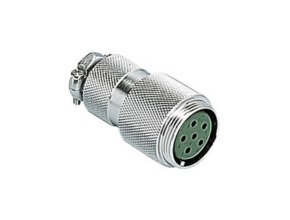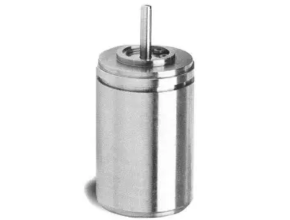Description of Philmac StockPHIL Float Valve
Philmac’s unique and compact StockPHIL float valve has been designed specifically for stock troughs. The valve hugs the trough wall and has no long lever arm, virtually eliminating the risk of damage caused by stock.

The body and plunger are manufactured from engineering-grade thermoplastic. This provides a high level of wear, UV, and corrosion protection.
The body is manufactured from quality dezincification brass. This ensures it is resistant to the loss of zinc which would otherwise cause leakage and premature failure.
The arm is located so it operates over the body thus ensuring a compact size valve and minimising stock damage.
By utilizing marine grade 316 stainless steel for the lever and pivot pin, and the seat of the brass version it provides not only excellent corrosion resistance but also strength to resist damage.
The valve has been designed for easy disassembly by simply removing the pivot pin and body cap to allow access to all parts.
By utilizing a tube over the cord it prevents the cord from potentially wrapping around the valve body when the water level drops. This ensures the valve reliably opens and closes.
The range is comprehensive and includes sizes from ¾” to 1-¼” to suit a range of trough sizes.
The float has been designed to hug the wall of the trough and minimise stock tampering with them. They also have built-in protective buffer strips to protect should they rub on the wall of the trough.
Application of Philmac StockPHIL Float Valve
- Agriculture: Stock troughs and tanks
Benefits of Philmac StockPHIL Float Valve
Fast and Easy Installation
- Multi-position Installation: The valves have been designed to work in either a vertical or horizontal position for flexible installation.
- BSP Inlet Threads: The Rural, Irrigation, and Plumbing sectors use British Standard Pipe (BSP) threads as a standard. Philmac also uses these thread types across the valve range to ensure compatibility with other threaded fittings and make installation easy.
- Cord Attachment: The cord is easily attached to the float and therefore adjustment of the cord is a quick and simple process.
Complete Security
- Reliable Operation: Consistent high-quality injection molded plastic bodies or machined brass plus a stainless steel lever arm and stainless steel seat (brass version) means years of reliable operation.
- Corrosion Resistant: Manufactured with plastic, stainless steel, and brass components which all have a high degree of corrosion resistance ensuring the longevity of the valve in harsh agricultural conditions.
- Lever Damage: Stock can no longer stampede/damage the lever or force unnecessary water out of the valve, as the float operates independently of the small lever on the valve.
High Performance
- Manufactured from advanced
thermoplastic materials: Philmac plastic trough valves are manufactured from lightweight performance thermoplastic materials, which have excellent impact, UV, and corrosion resistance. - Low-pressure shutoff: Trough valves are designed to seal off with very low pressure providing there is water in the tank to provide upthrust on the float.
Complete Coverage
- Wide range: The range of trough valves is comprehensive and includes sizes ¾”, 1″, and 1¼” (DN20, 25, and 32).
Standards and Test of Philmac StockPHIL Float Valve
Standards
- AS/ISO 7.1, Pipe threads where pressure joints are made on the threads. Part 1 Dimensions, tolerances, and designations. (BSP threads)
- AS 1722.1: Pipe threads of Whitworth form part 1: sealing pipe threads. (BSP threads)
- ANSI/ASME B1.20.1, Pipe threads, General purpose (inch). (NPT threads)
- ASTM F1498, Standard specification for tapered pipe threads 60° for thermoplastic pipe and fittings. (NPT threads).
Tests
- Shut-Off Test: Valves are tested for shut-off against a hydrostatic water pressure of 300 kPa (43 psi) or 3 bar.
Operation and Installation Instructions of Philmac StockPHIL Float Valve
The Philmac trough valves operate by opening and closing a plunger against a seat through the action of a lever attached to a float. As the water level drops, the float and lever move in a downward direction and the plunger moves away from the seat opening the valve. When the water level rises, the float and lever move in an upward direction and the plunger moves toward the seat until it sits firmly against the seat and shuts the valve off.
- Apply PTFE tape or approved sealant to the thread ensuring sufficient is applied to ensure a watertight seal.
- Screw into female thread by hand until firm.
- Using a pipe wrench or multi grips on the body of the valve screw it into the female thread until tight. Where necessary ensure the female thread is held stationary to avoid it from moving.
Conversion for Overhead Entry
- For overhead installation, the lever needs to be relocated by unscrewing the pin from the body.
- Rotate the lever by 180° and reinsert the pin through the lower hole (the upper hole is for the standard installation). (Refer to page 54 for pin locations).
- Installation position.
Setting the Float
- Make a loop and insert it through the hole in the bottom of the float.
- Insert the cord through the loop allowing enough cord to tie off the float on the top lugs.
- Pull tight the knot on the bottom of the float. This knot can easily be loosened to adjust the float level.
- Bring the cord to the top of the float between the two lugs.
- Loop around the lug.
- Then twist the cord to make a loop and pass the cord back between the lugs while holding the loop.
- Loop the cord around the opposite lug and then pass through the loop.
- Pull to tighten on the lugs.
- Once adjusted to the correct level in the trough any excess cord can be trimmed if necessary.
Source: Philmac.com
Read More Articles:
- Skimoil Steel Mill Oil Skimmers
- Skimoil Floating Drum Oil Skimmer
- Skimoil Coal Ash Pond Decanter Skimmer
- Skimoil Industrial grade floating surface skimmer and decanter
- Alicat PB-Series Portable Absolute and Gauge Pressure Transducers




